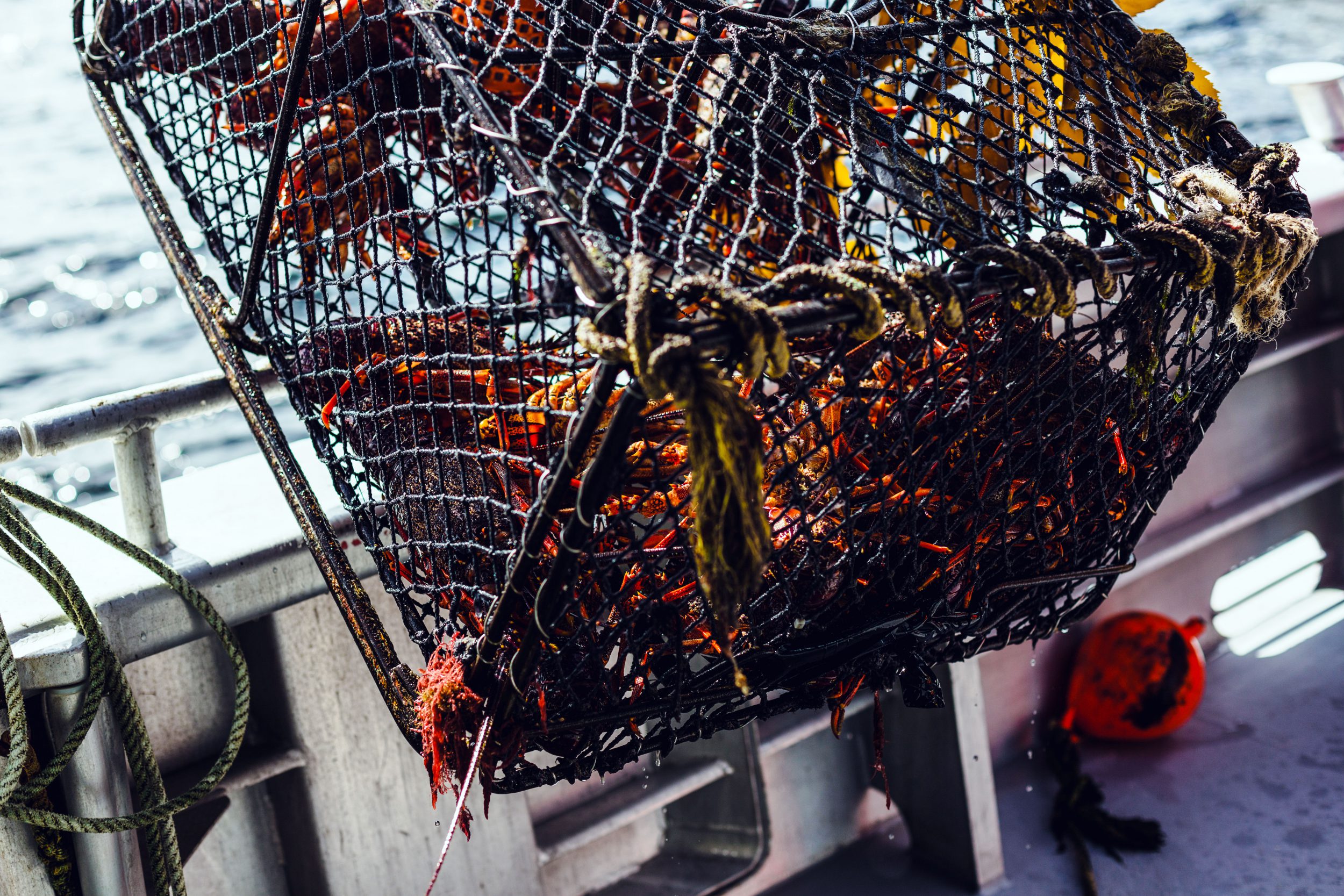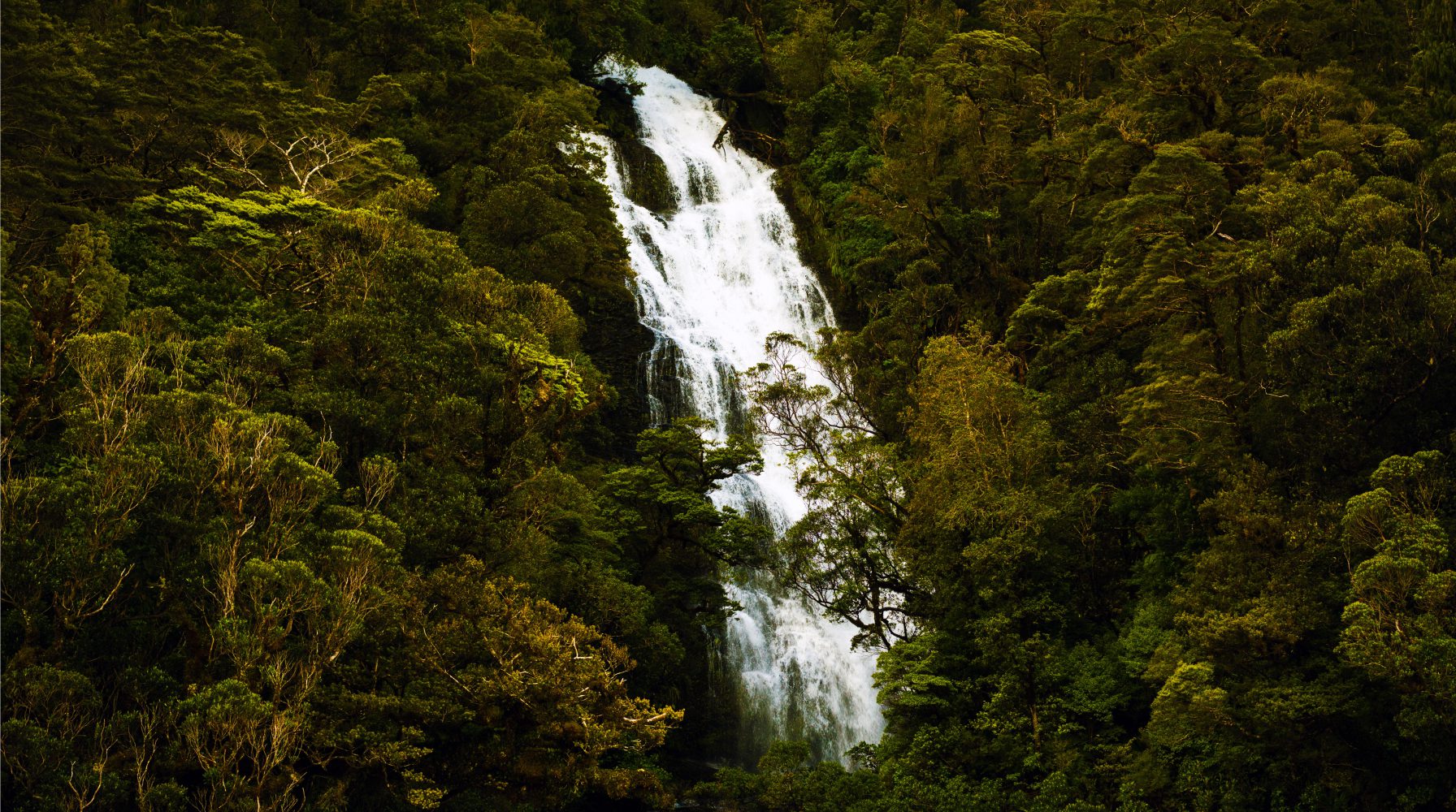South Island, New Zealand: A Night in the Sound
There are few places in the world that remain unscathed by man. Doubtful Sound, Fiordland, is one of them. Still, serene and inaccessible by road, it is no wonder the majestic fiords are also known as Patea, or ‘the place of silence’. Doubtful is a destination frozen in time, having remained mostly unchanged since its final flourishes were added during the last ice age 15,000 years ago.
Captain Cook originally named the sound Doubtful Harbour in 1770, when he first approached but failed to enter the inlet, as he was unsure if it was large enough for safe manoeuvring. He later returned, and his visit preceded a chequered history of European exploration and near-exhaustion of the land and its inhabitants. Large sealing and whaling industries were established in the 1790s and 1820s respectively — the former leading to the collection of 4500 skins per year, until fur seals around the southern coasts were threatened with extinction. Later, runholders arrived, along with gold miners: there was a small rush in Martins Bay in 1886, though it was abandoned within the year due to meagre returns.

At a staggering 421 metres deep and 40 kilometres long, Doubtful Sound is the deepest and second-longest of New Zealand’s fiords; it has a surface area 10 times larger than that of its better-known sibling, Milford Sound. Yet the World Heritage-listed site is just a tiny groove in the map of Fiordland National Park, which at 1.2 million hectares is the largest of New Zealand’s national parks.
To explore Fiordland, Te Anau provided the perfect base, just 2 hours from Queenstown and less than a 20-minute drive from the departure point of our Doubtful Sound cruise. The picturesque Lake Te Anau covers 344 square kilometres and our spacious, newly-refurbished accommodation, the Lakefront Lodge, was separated from it by only a single road. The well-appointed premises comprise 13 self-contained units, ranging from studios to one-bedroom units with a queen bed and two additional singles. Each unit is roomy, tidy and fully equipped with far more than the standard facilities: there is a kitchen, free Wi-Fi, Sky TV and a luxurious spa bath.
I was delighted to find I only had to step through the glass door of my unit to admire the breathtaking landscape. The picnic table on the patio was perfectly positioned to provide an unspoilt view of the peaceful lake and its mountainous backdrop. As a result, we opted to enjoy a takeaway dinner at the table rather than go out. Consumed by the view, we ate mostly in silence — except to remark at the beauty before us or eagerly discuss what might be awaiting us the following day.
We arrived at Pearl Harbour on Lake Manapouri at 9:30 in the morning to begin our own discovery of the sound. There we met the affable Diane — who, along with her husband Chris, owns and operates Deep Cove Charters — and the rest of our tour group. Just seven of us in total, including Chris, our skipper and guide, were to embark on an intimate cruise that takes up to 12 guests at a time. From Pearl Harbour we took a 45-minute boat ride across the lake to the West Arm, after which we hopped in a minivan and were driven 20 kilometres along the rugged, twisting Wilmot Pass, climbing to a height of 671 metres before descending into Deep Cove, the terminus to the sound.

During the drive, we stopped frequently to take photographs, as the height of the road provided a vast outlook over the sound. I began to feel car sick from constantly turning my head, every moment distracted by another roadside waterfall or high-rise view of the dramatic U-shaped valleys below. Rarely pausing for breath, Chris shared his extensive knowledge of the area with us; a bridge we just crossed had 3 weeks ago been completely washed away by the river.
At Deep Cove we excitedly boarded the comfortable and modern passenger boat, Seafinn — 19 metres long, with six individual sleeping cabins — and began our scenic overnight cruise. What awaited us was nothing short of spectacular. Mountainous, snow-powdered peaks stretched out before us, soaring hundreds — even thousands — of metres in the air, shrouded by fog and drizzle. The rain — which would have been dismal anywhere else – ensured we had prime viewing of hundreds of waterfalls that poured off huge granite precipices into the corrugated glassy water.
Radiometric age dating shows that the oldest rocks in the Fiordland National Park date back 450 million years, well before the islands of New Zealand even existed. The fiords were first formed during the ice ages, as large quantities of snow accumulated in the mountains, compressed under newer snow until it melted and refroze to form glacial ice. The landscape we see today was carved by glaciers embedded with rock fragments. It is no wonder the ancient and imposing site is associated with Māori legend. Eight hundred years ago, ancient Māori began travelling to the area to collect pounamu, or New Zealand jade. Too incredible to have been formed by chance, they believed the fiords were shaped by the ‘titanic mason’ Tute Rakiwhanoa with his adzes. The explanation seems fitting.
The first major feature we passed on the cruise was Rolla Island, home to a 500-year-old rimu tree, along with several rata — also known as the ‘southern Christmas tree’ — blooming with bright red flowers. It was there, too, that we experienced our first exciting encounter with a small group of crested penguins, identifiable by the two symmetrical yellow-feathered ‘mohawks’ above their eyes.

Chris then informed us that we were entering the Elizabeth Island Marine Reserve as we passed by the left side of the island and into increasingly choppy waters. We then continued into Crooked Arm — shaped just as one would expect from the name, this is one of three main arms in the sound — venturing as far as Turn Point. Along the way we were taken to the feet of the most impressive waterfalls of the cruise, including Browne Falls — at 1200 metres high, the tallest waterfall in the Southern Hemisphere.
After enjoying a delicious crayfish lunch, we journeyed into the more sheltered waters of Gaol Passage in the First Arm. Our group was provided with rods and bait and issued with instructions (only half-jokingly) to catch dinner. It was very much a fisherman’s heaven, as we only needed to have our bait waiting at the bottom for a brief moment before the nibbling began. As luck would have it, I managed to catch a large blue cod, contributing to the number of Jock Stewarts and blue cods that we caught between the seven of us. Later we did indeed have the fish for dinner, cooked to perfection along with deliciously tender venison.
Even as we covered greater distances, it was difficult to appreciate Doubtful’s great expanse. To feel the wild beauty outstretched before me, with all of my senses, was a truly humbling experience. While floating in the cool, crisp air, I truly understood my smallness — and yet, I had never felt so tranquil.
In the afternoon we ventured further, the sound continuing impossibly on. Cutting through The Gut, we reached the Shelter Islands at the ocean entrance to the Tasman Sea. Though standing at 15 metres tall, Chris informed us that two rocks called the Hares Ears are sometimes completely submerged by the waves, highlighting the ocean’s startling tenacity and brute strength. Slowly the sun began to set, shining its last rays on the rugged landscape like spotlights on a stage. We watched as, in the distance, a sailing boat slowly, peacefully crossed the horizon. It was only then, seeing the ship dwarfed by its backdrop, that I could begin to understand Doubtful’s impressive scale.

With still more to see, we glided past Secretary Island, sliced from the mainland by glacial ice. In 2003, a 7.1 magnitude earthquake raised the island by an astonishing 18 centimetres, the epicentre being just 12 kilometres deep and directly below the sound itself. Coastal Fiordland is one of the most seismically-active parts of New Zealand, and as a result, earthquakes — along with rock falls and tree avalanches — are some of the many natural forces reshaping the landscape.
Following trips into Thompson and Bradshaw Sounds, we stopped to enjoy a delicious dinner (and a few wines) on the Camelot River: certainly up there with the very best spots any of us had ever enjoyed a drink. The moment provided pause to reflect on the significant day we’d had. My travelling companion remarked that pictures simply do not do it justice — words that held particular weight coming from a photographer.
The next day we awoke to the sight of a fresh dump of snow dusting the mountain peaks: a reminder that although it was November, Fiordland is ultimately a glacial wonderland. In winter, a thick layer of ice develops over the surface of the water — so thick it has been known to trap and damage boats.
The marine environment in the fiords is like no other in the world. The body of water is made up of two distinct layers that scarcely mix: a 2 to 10-metre layer of fresh water fed from the neighbouring mountains, on top of a layer of saline water. Light struggles to penetrate through the fresh water layer due to the dark tannins, and as a result, many deep-sea species inhabit the relatively shallow waters. This includes black coral: usually found at depths of 30-40 metres, it can be seen just 10 metres deep in the sound.
Not long after rising for breakfast, while at the corner of Gaer Arm, a pod of bottlenose dolphins joined us at the bow. This was far from the only wildlife sighting of the day. Along with dolphins and penguins, it is also possible to sight fur seals and whales in the sound. We saw proof of the latter when Chris showed us several photographs on his camera of a whale he had spotted on a trip just days before.

At Seymour Island, we came upon more crested penguins — a larger group than we had seen the previous day. Amused, we watched as just a few metres in front of us, one penguin appeared to take charge and order the others around. Being part of a small charter — particularly one run by such an expert as Chris — certainly had its benefits, as it allowed us to get just inches away from these sights.
Hall Arm was the final stop on our adventure, including a look at Commander Peak, a truly impressive summit that reaches 900 metres high. The last moments of the cruise were marked by a silent stillness. Captured, as if by a spell, we stared out in a final, desperate attempt to commit every image and sensation to memory.
When we met Diane back at Lake Manapouri, where our journey had begun, she asked me whether I had enough material to write this article. “Too much,” I replied truthfully.

